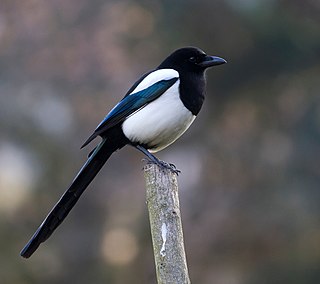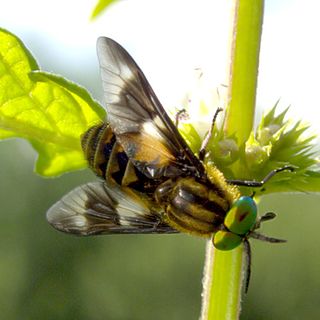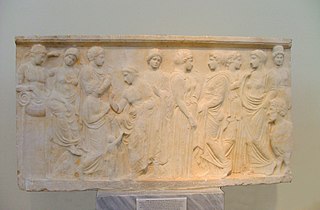
Owls are birds from the order Strigiformes, which includes over 200 species of mostly solitary and nocturnal birds of prey typified by an upright stance, a large, broad head, binocular vision, binaural hearing, sharp talons, and feathers adapted for silent flight. Exceptions include the diurnal northern hawk-owl and the gregarious burrowing owl.

Genus is a taxonomic rank above species and below family as used in the biological classification of living and fossil organisms as well as viruses. In binomial nomenclature, the genus name forms the first part of the binomial species name for each species within the genus.

Castalia, in ancient Greek and Roman literature, was the name of a spring near Delphi, sacred to the Muses; it is also known as the Castalian Spring. It is said to have derived its name from Castalia, a naiad-nymph, daughter of the river-god Achelous, who is said to have flung herself into the spring when pursued by the god Apollo.
Cephissus, Cephisus, Kephisos, or Kifisos may refer to:

Iaso or Ieso was the Greek goddess of recuperation from illness. The daughter of Asclepius, she had four sisters: Aceso, Aegle, Hygieia, and Panacea. All five were associated with some aspect of health or healing. For more information on the genealogy of Iaso, see Panacea.

Magpies are birds of various species of the family Corvidae. Like other members of their family, they are widely considered to be intelligent creatures. The Eurasian magpie, for instance, is thought to rank among the world's most intelligent creatures, and is one of the few nonmammalian species able to recognize itself in a mirror test. Magpies have shown the ability to make and use tools, imitate human speech, grieve, play games, and work in teams. They are particularly well known for their songs and were once popular as cagebirds. In addition to other members of the genus Pica, corvids considered magpies are in the genera Cissa, Urocissa, and Cyanopica.

A spirochaete or spirochete is a member of the phylum Spirochaetota, which contains distinctive diderm (double-membrane) Gram-negative bacteria, most of which have long, helically coiled cells. Spirochaetes are chemoheterotrophic in nature, with lengths between 3 and 500 μm and diameters around 0.09 to at least 3 μm.

Eutheria, also called Pan-Placentalia, is the clade consisting of placentals and all therian mammals that are more closely related to placentals than to marsupials.

Verrucomicrobiota is a phylum of Gram-negative bacteria that contains only a few described species. The species identified have been isolated from fresh water, marine and soil environments and human faeces. A number of as-yet uncultivated species have been identified in association with eukaryotic hosts including extrusive explosive ectosymbionts of protists and endosymbionts of nematodes from genus Xiphinema, residing in their gametes. The verrucomicrobial bacterium Akkermansia muciniphila is a human intestinal symbiotic bacterium that is considered as a promising probiotic.

The Cephissus, called the Boeotian Cephissus to distinguish it from other rivers of the same name, or Kifisos is a river in central Greece. Its drainage basin is 1,958 km2 (756 sq mi). The river rises at Lilaia in Phocis, on the northwestern slope of Mount Parnassus. It flows east through the Boeotian plain, passing the towns Amfikleia, Kato Tithorea and Orchomenos. It drained into Lake Copais, which was therefore also called the Cephisian Lake, until 1887, when the lake was eliminated in favor of agricultural land. An artificial outflow has been created to Lake Yliki, further east.

In Greek mythology, Nilus is one of the three thousand Potamoi, the river gods, who represent the god of the Nile river itself. Nilus is the son of the water gods Oceanus and Tethys.
In Greek mythology, Asterion was a river-god of Argos.

Mesostigmata is an order of mites belonging to the Parasitiformes. They are by far the largest group of Parasitiformes, with over 8,000 species in 130 families. Mesostigmata includes parasitic as well as free-living and predatory forms. They can be recognized by the single pair of spiracles positioned laterally on the body.
In Greek mythology, Thyia was the Naiad-nymph of a spring on Mount Parnassos in Phokis and was a female figure associated with cults of several major gods.

Superfamily Tabanoidea are insects in the order Diptera.

In Greek mythology Cephissus also spelled Kephissos is a river god of ancient Greece, associated with the river Cephissus in Attica and/or with the river Cephissus in Boeotia, both in Greece.

Mylothris jacksoni, the Jackson's dotted border, is a butterfly in the family Pieridae. It is found in Nigeria, Equatorial Guinea (Bioko). Cameroon, Sudan, Ethiopia, the Democratic Republic of the Congo, Uganda, Rwanda, Burundi, Kenya and Tanzania. The habitat consists of submontane forests.
A drainage tunnel, called an emissary in ancient contexts, is a tunnel or channel created to drain water, often from a stagnant or variable-depth body of water. It typically leads to a lower stream or river, or to a location where a pumping station can be economically run. Drainage tunnels have frequently been constructed to drain mining districts or to serve drainage districts.
In Greek mythology, Phrasimus was the Athenian husband of Diogenia, daughter of the river-god Cephisus. The couple had a daughter named Praxithea who married Erechtheus of Athens.
In Greek mythology, Diogenia was the Athenian naiad-daughter of the river-god Cephisus and wife of Phrasimus. The couple had a daughter named Praxithea who married Erechtheus of Athens.












